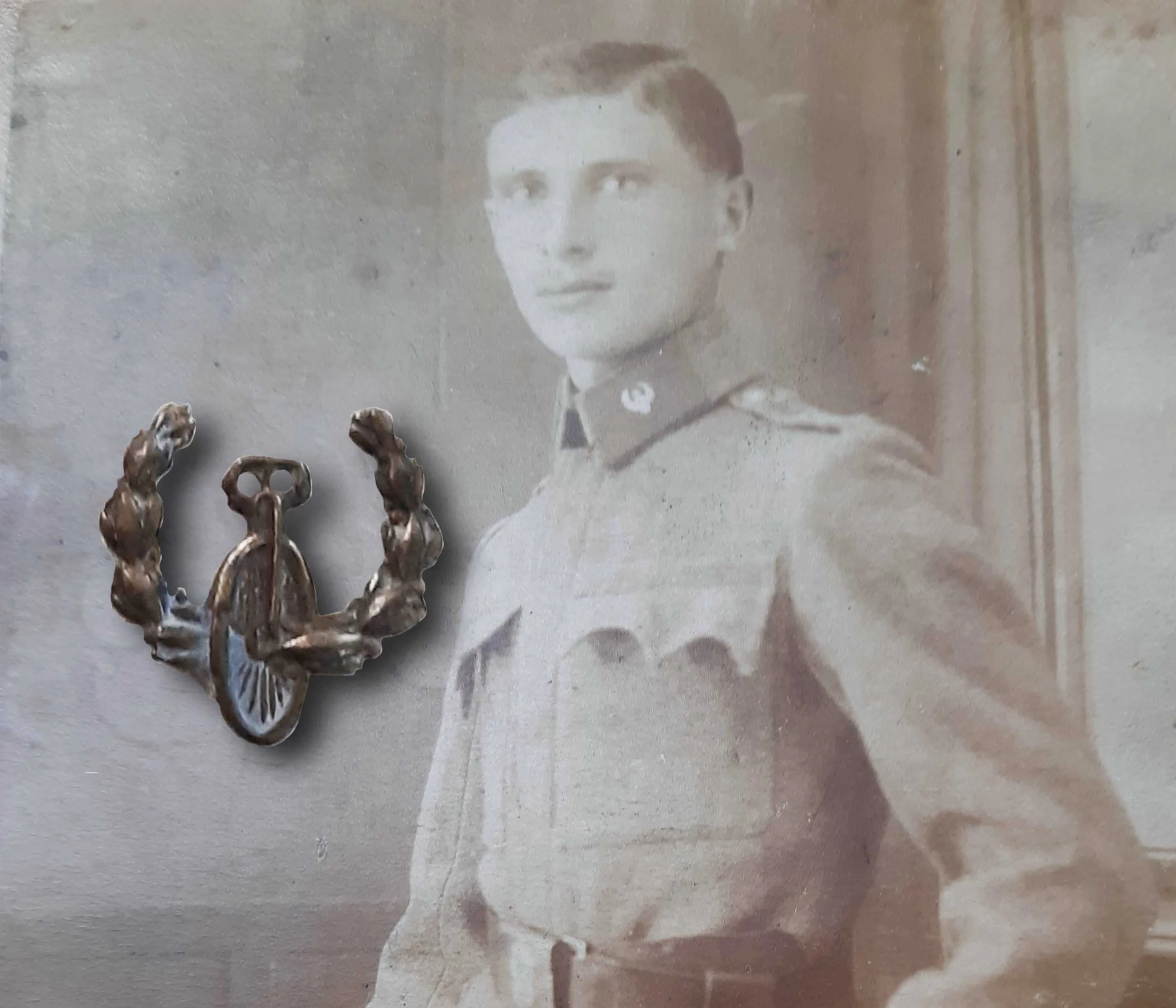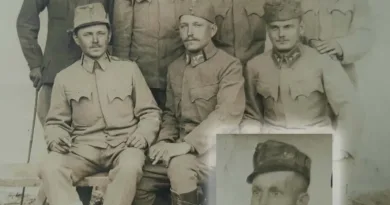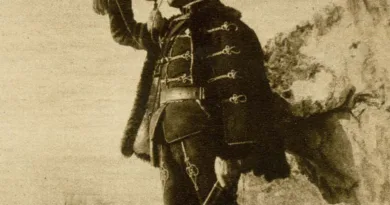Cyclists’ badge
The second part of the Gábor Széplaki’s post on cyclist insignia.
In my previous post I was writing about the distinctive insignia of volunteer cycling units, in this post I will share some thoughts on the distinctive insignia of soldiers serving in hunting and regular infantry cycling battalions.

Circular Decree No. 353201/7 was published for the Royal Hungarian Honvéd on December 22, 1917, which regulated, among other things, the badges of cycling units and their wearing.

The badge depicts a monocycle without cranks and pedals. Starting from the center of the wheel, two upward-facing laurel branches frame the vehicle, extending beyond its saddle. All badges are exactly the same, there are no pieces to wear on the left or right collar. The pieces in my collection show differences in both material and material thickness as well as pattern.

The decree prescribes gold specimens for officers, silver specimens for staff officers (with their gold-colored collar trimmings), and non-commissioned officers, as well as for crew members. The personnel of the cycling unit wears the distinctive insignia on the collar and on the left side of the field cap. The decree stipulates that the wearing of a distinctive badge on the cap is permitted only during a military operation or during major peace time exercises. The regulation also mentions that officers and officials may wear gold or silver embroidery.
Metal badges are found in collections and auctions, but embroidered copies are a rarity in the same way as contemporary wear photos. Their rarity may be due to the end-of-war regularization and the small number of formations relative to the total force.

Until the end of the Second World War, many cyclist units were active also in the Hungarian Royal Army. World War I bicycle badges continued to exist as signs of skill until the mid-1930s. They were worn by cycling soldiers on the left upper arm of the tunic, in a triangular, colored post lined with trimmings. In the case of officers, there were also artistically prepared embroideries.
After the Second World War in Hungary, the badges (45M) were also issued for cyclists in the Democratic Army, but units were no longer organized.




